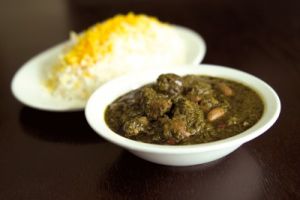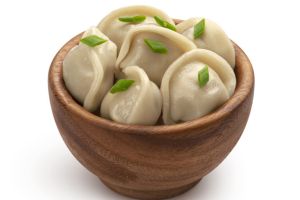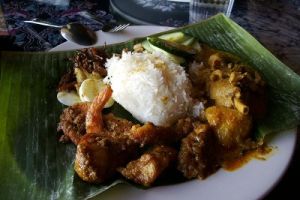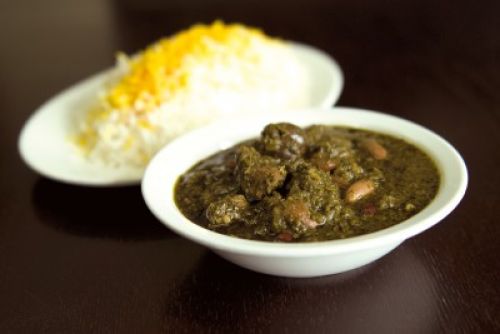
Ghormeh sabzi
Ghormeh sabzi is a Persian herb stew dates back as far as 5,000 years with an origin of Iran.
Azerbaijanis have also adopted the Iranian dish as a favorite. It is a popular dish in Iran, Iraq, and Azerbaijan and is often said to be the Iranian national dish.
Ghormeh means stewed and sabzi literally means greens that stand for herbs. The main ingredients are a mixture of sautéed herbs, consisting mainly of parsley, leeks or green onions, cilantro, and spinach, seasoned with the key spice of "shambalileh" (dried fenugreek) leaves.






-
1 bunchFresh spinach or 1 medium size package.
-
1/2Fresh dill
-
1 bunchFresh parsely
-
1 bunchFresh cilantro or coriander
-
1 bunchFresh Leak (use only the green stems).
-
1 bunchFresh chives or substitute stems of one Bunch of scallions.
-
1 bunchFresh fenugreek or substitute 1 table spoon of dried one.
-
0,5 kgStew meat (beef, lamb, veal, etc.), cubed.
-
4dried lemons or 1 table spoon dried lemon powder.
-
1medium onion, finely diced.
-
1/2 teaspoonTurmeric
-
3 tablespoonsCooking oil.
-
1 tablespoonLemon juice (optional).
-
1 cupPre-soaked dried beans, or substitute 1 can.
-
A touch ofSalt, pepper and crushed red peppers (if you like it spicy).

-
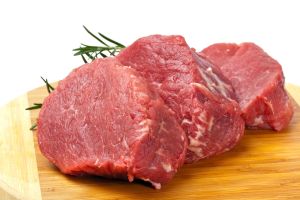 Wash the meat and let it drain. Cut off the heads of the leaks and scallions and put the stems along with the rest of vegetables in a kitchen stringer, thoroughly wash and drain them.
Wash the meat and let it drain. Cut off the heads of the leaks and scallions and put the stems along with the rest of vegetables in a kitchen stringer, thoroughly wash and drain them. - Using a cutting board, while repeatedly bunching up all vegetables together, finely chop the vegetables. Smaller pieces are better.
-
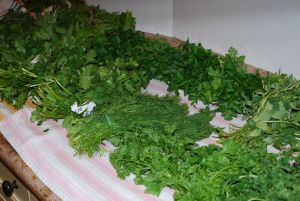 If you have a food processor, you could use it in place of the manual labor. Place the chopped vegetables in a pot, with heat setting on high and frequently stir the vegetables until all their excess water has evaporated.
If you have a food processor, you could use it in place of the manual labor. Place the chopped vegetables in a pot, with heat setting on high and frequently stir the vegetables until all their excess water has evaporated. -
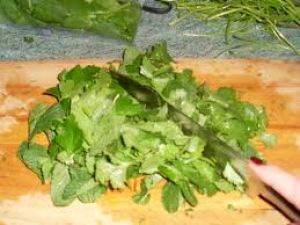 Add two table spoons of cooking oil and continually stir fry the vegetables until they turn a brownish color. This process should take about 15 minutes. Take the pot off and put it aside. During the stir fry process, you may add a bit more oil if needed.
Add two table spoons of cooking oil and continually stir fry the vegetables until they turn a brownish color. This process should take about 15 minutes. Take the pot off and put it aside. During the stir fry process, you may add a bit more oil if needed. - When finished, the vegetables resemble dried ones with no water remaining in the pot. In another pot, add about one table spoon of cooking oil and the chopped onions and stir fry until they turn a golden brown color.
-
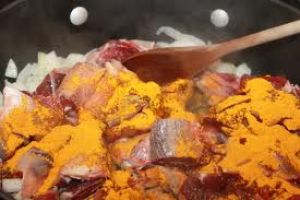 Add the meat, stir fry for a few minutes, add salt, pepper and turmeric and let the meat fry with the onions for a few minutes. If you are using dried beans, at this point drain them and add them to the mixture.
Add the meat, stir fry for a few minutes, add salt, pepper and turmeric and let the meat fry with the onions for a few minutes. If you are using dried beans, at this point drain them and add them to the mixture. - Turn the heat setting to medium. Next poke a hole in each of the dried lemons and add them to the mixture (or add the powdered kind). Add about two cups (16 oz.) of water, place the lid on the pot and let it boil for another 15 minutes.
-
 Add the fried vegetables into the mixture, turn the heat setting to medium-low and let it cook. The cooking time required from this point on is about an hour. Half way through this period, if you are using canned beans, add them into the mixture.
Add the fried vegetables into the mixture, turn the heat setting to medium-low and let it cook. The cooking time required from this point on is about an hour. Half way through this period, if you are using canned beans, add them into the mixture. - Once the meat is separated when poked by a fork, the stew is ready.
-
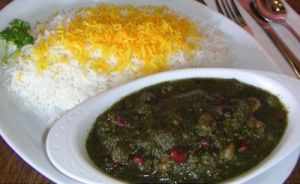 This stew is served over white rice. If you like the sour taste, you may add a table spoon of lemon juice towards the end of cooking.
This stew is served over white rice. If you like the sour taste, you may add a table spoon of lemon juice towards the end of cooking.

When stir frying, its imperative to constantly stir the vegetables. Otherwise, they quickly form a crust and burn. You can easily undercook the vegetables but you can hardly ever over cook them. If they look watery stir fry them a bit longer.
Almost all of the vegetables listed above are easily found at produce section of grocery stores. The only exception to this is shanbelileh (fenugreek). You can purchase dried ones from middle eastern stores.
Tareh (called chives and sometimes garlic chives) is somewhat hard to find. In place of chives, use the stems of scallions (also called green onions).
There are two kinds of parsely in the market. One is labeled as parsely and the other is called Italian parsely which has larger size leaves. You may use either one.
This stew can be made with two kinds of dried/canned beans. Either use kidney beans (loobiA ghermez) or black-eyed beans (loobiA cheshm bolboli). The canned beans soften quickly, so add them almost at the end and do not use the liquid inside the can.
If your stew ends up having a bitter taste, you more than likely burned the vegetables. If it smells like hannA (henna), you added too much spinach. You can't recover from these two mishaps. If the vegetables swim to one side and the meat goes the opposite way, you've undercooked it. Put in back on medium heat and let some of the excess water evaporate.

 Italiano
Italiano  English
English  Français
Français  Español
Español  Русский
Русский  简体中文
简体中文  عربي
عربي 
